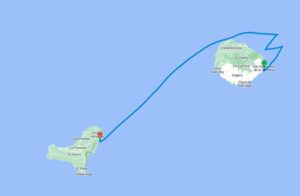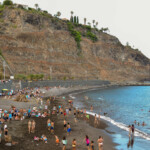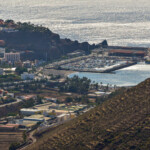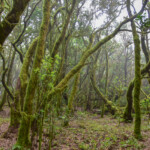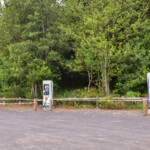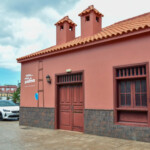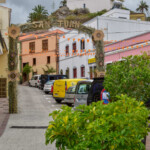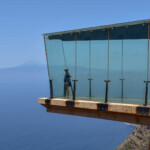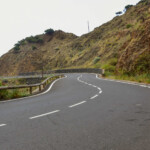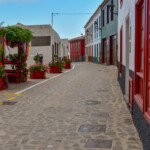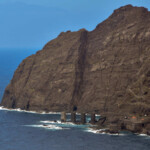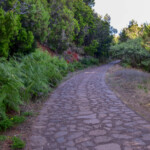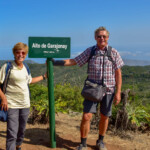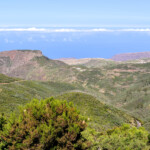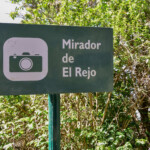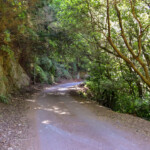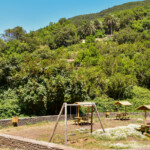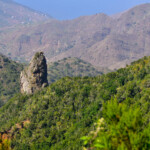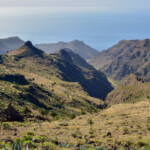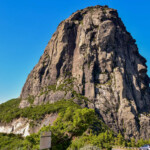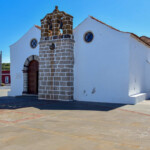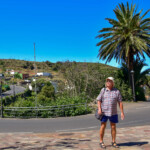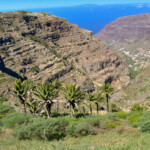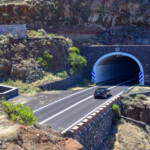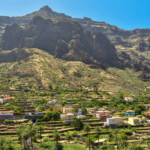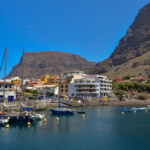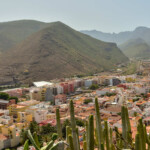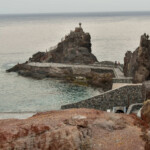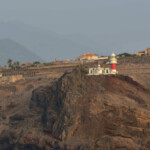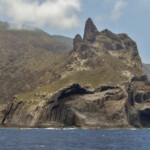La Gomera
It is one of the smallest Canary Islands. The area is only 370 km2. You can rent a car to explore the island. We use the Cicar rental at the nearby ferry port – it is inexpensive and has nice cars, and above all, when you “click” on the website, you get the car as you “clicked” or similar, and you don’t wait for information whether the car will be available available on this date (as in most other rental companies).
The island is very different from the other Canary Islands primarily in the amount of greenery (especially in the northern part of the island). Not only palm trees grow here, but also cedars and deciduous and laurel trees. Everything is pretty green. The island was formed as a result of a volcanic eruption, but it was about 2 million years ago.
In 2011, La Gomera was listed as a UNESCO Biosphere Reserve.
Road GM-2 and GM-1
It is worth driving around the island by car on the GM-2 roads, and then on the GM-1. From San Sebastian, it is best to leave the island on the GM-2 road and return on the GM-1 road. Along the way, it is worth stopping at numerous miradoras (viewpoints) – they are marked with information signs with a picture of a camera on the road. The views are stunning (as there is no fog of course). It is also worth turning to La Laguna Grande – a picnic area in a nice setting.
Alojera
A charming town with the Honey Palm Museum (Centro de Interpretación de la Miel de Palma), open from Wednesday to Saturday 10-17. Unfortunately, we rented the car from Sunday to Tuesday, so we won’t see what’s inside :-(, although it has very good reviews.
Vallehermoso
A town in the northern part of La Gomera. It is worth leaving the car in the city center and walking through the narrow streets. Yesterday was the shortest night and there were lots of parties in town. Today, all that’s left of the party is the decorations. The Roque Cano rock overlooks the city. It is also worth stopping at the viewpoint above the town – it looks sweet from above with its colorful houses on the hill. The city lies in the valley of the Velle Hermoso, which in Spanish translates as beautiful valley, and it is beautiful.
Mirador de Abrante
Probably the most famous viewpoint on La Gomera. It is located on the edge of an almost vertical cliff, and you can go beyond the edge of the cliff on a glass platform. Open until 4pm except Mondays, and closed when there is fog. The view is nice, although the one in Madeira was more spectacular, and the cliff was more vertical, although the height of both is similar (less than 600m). And one more difference – in Madeira the windows were only on the floor, and here they are all around and despite washing, they are not crystal clear.
Agulo
Another candy town with narrow streets. All streets are one-way, but can be driven by car. We left the car in the parking lot and went around the town on foot – it’s not far away, and you can see more than from the windows of the car – it’s really worth it.
Atlo de Garayonay
The highest peak of the island 1487m above sea level. Several trails lead to it. The shortest time is from El Contadero (about 1.5 hours including taking photos at the top) – it’s a roundabout way – you go up a different way than you go down. The road is beautiful among the forest, and along the way there are two viewpoints (it is worth deviating about 30 m). At the top, there is an observation deck with views of the entire island and its surroundings. In clear weather you can see Tenerife, Gran Canaria, El Hierro and La Palma. And of course La Gomera.
One trail leads along a road reinforced with stones (this is where we go down) followed by a car from the park staff. Another road (also a circular one) leads from the Pajarito roundabout, but there you need to spend about 4 hours going up and down.
Alajero
Another pretty town on the southern part of the island. It is worth stopping you here and walking through the streets of the city, and then moving towards Playa Santiago.
La Gomera Airport
Small airport – only serves local flights (to Tenerife and Gran Canaria) – a larger plane would not fit on the runway (on the embankment above the cliff). The terminal is new, with 2 gates and baggage drop desks (on domestic flights, 20 kg of checked baggage is included in the ticket price).
The gate to the airport car park is locked at night.
Playa Santiago
A small marina and ferry port in the south of the island. Some guesthouses, some tourists, a beach and a charming town again. It’s worth spending 15 minutes to walk through the streets.
El Cedro
Parking lot with camping and restaurant in the middle of Garajonay National Park. The car park is reached by a picturesque winding road through the forest. In places, the road, in addition to 180º turns, also has quite a steep slope. Many hiking trails start from the car park. There is also a 500m tunnel where you can stand (it’s an old adit shaft) it ends at the path on the other side of the mountain, but we don’t go that far to check it out. We watch the campsite and the restaurant from above (Tomek makes a drone film).
Garajonay National Park
It is located in the central part of the island. The area is mainly forested with laurel trees, although there are also quite a few conifers. There are many hiking trails through the park and two car roads. One through El Cedro and the other more east through Mirador del Valle hermoso (a view of a beautiful valley). Both roads are asphalt, although narrow (there are passing places along the way). The GM-2 road also runs along the edge of the park. All roads are charming, full of viewpoints and it is worth driving these dogs stopping at all marked viewpoints.
Los Organos
Rock formation visible from the water in the north of La Gomera. It’s worth swimming to it (it’s about 20Nm to cross). Beautiful cliffs unique in the entire Canary Islands. They are 200 meters wide and 80 meters long and huge, prismatic basalt columns. They fall into the ocean and continue below the waterline.
El Hierro
One of the smaller Canary Islands (the smallest of the 7 larger ones), the westernmost one, used to be considered the end of the world :-). It is the youngest island – it is “only” 1.1 million years old.
Marina de La Estaca
Northern marina of el Hierro. The closest to the airport (5km) and the capital of the island (Valverde). There is a bus to the capital – the journey time is about 15 minutes. The bus is a small bus – it runs 4 times a day.
The marina is new, policemen help with mooring and they manage the marina (there is a 24-hour duty). The berth of our yacht is 27€/day. You pay for the marina per day (if you leave in the morning, they do not add the fee for the day of departure). Sanitary facilities are available in the ferry port building. There is no ferry on Saturday so the building is closed as well as the cafe in the building. New toilets and showers are under construction, but the building itself is still standing. In addition to the ferry port and marina, there is also a Cicar car rental (open when someone has booked a car). The nearest grocery store is in Valverde.



